A talking parrot is one of the most beautiful and intelligent members of the animal kingdom. So smart, in fact, that they can mimic the way humans talk. While they are unable to speak human language naturally, your pet parrot can be taught. It only takes enough patience, consistency, and positive reinforcement. With these, you and your feathered friend will be talking like old friends.
Table of Contents
What Are Parrots Like?
Living in tropical climates all around the world, parrots have been pets for centuries. They come in all shapes and sizes, from tiny budgies to large macaws!
They are a family of birds that have plumages that range in color. That includes black and white to a predominant green. They all have long tails and curved beaks, but some have facial feathers and crests. Their feet have two toes pointing forward and two pointing backward. These are known as zygodactyl feet.
Aside from being able to mimic human speech, parrots can perform complex tasks. Think of using tools or solving puzzles!
Do All Parrots Talk?
It may surprise you to know that not all parrots can talk. Now, this isn’t because some species can’t mimic the sounds of human language. In fact, most, if not all, are capable of doing it. It’s more to do with whether they want to even speak at all.
All parrots are individuals. A friend of yours may own a parrot who loves talking. Meanwhile, someone else’s cockatiel may never speak a single word. This is actually one of the many challenges in training a parrot to speak.
What Makes A Parrot Copy Human Speech?
Many factors will influence a parrot to mimic humans. One factor is sex. In many parrot species, like budgies or cockatiels, the males will whistle and sing to court females.
Another factor is age. Much like humans, pet parrots are easily trained when younger.
A parrot’s environment is also a major factor in its decision to talk. It only mimics the sounds it hears. So, a home with a lot of background noise will make it imitate those sounds.
Experiences with people also influence a parrot’s ability to mimic words. A parrot who is treated well will trust humans more. That makes it more comfortable to talk. Mistreatment, on the other hand, will cause them to be too shy and easily stressed. That will make their training more difficult.
Examples Of Good Talking Parrots To Train
African Grey Parrot

African grey parrots are widely considered the most intelligent of the parrot family. They are a very popular choice for those interested in talking birds. Gray feathers cover their back and wings. They may have bright red or deep maroon tailfeathers depending on the species.
African greys are smart problem solvers and at their happiest when they play with toys. They also have the potential to have the largest vocabulary than other talking parrots. That makes them good talkers.
Amazon Parrot
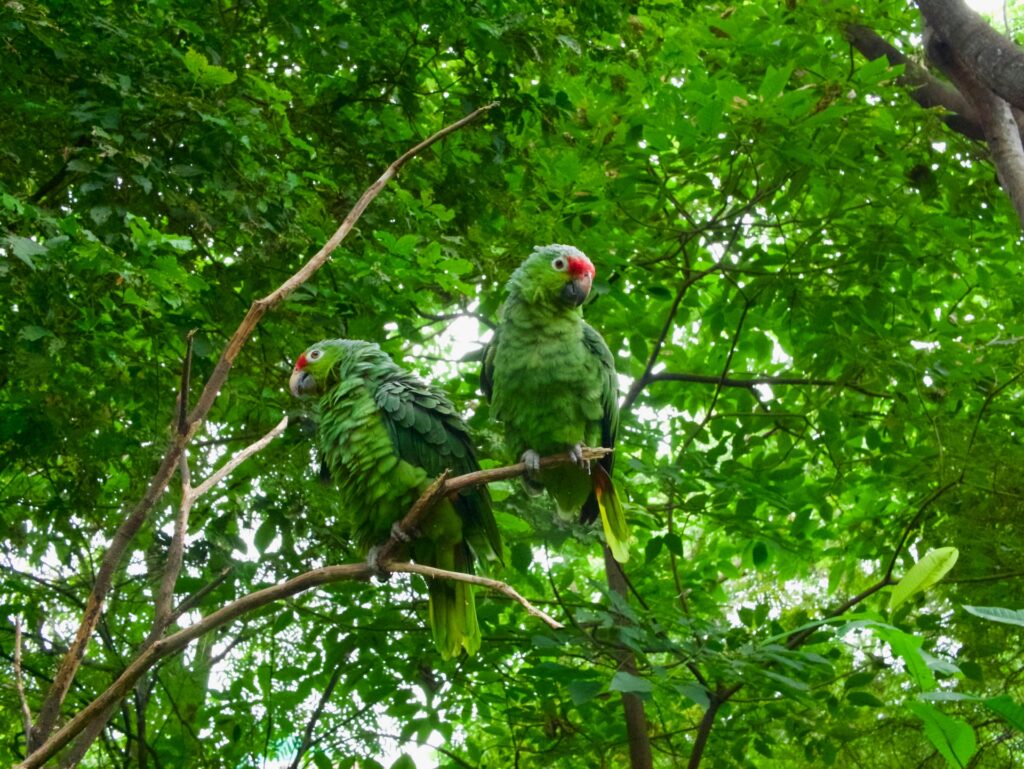
The Amazon parrot species are known for speaking with sweet and clear voices. They are another good option for those looking to have a parrot for a pet. These birds are mostly covered in green feathers. But certain species have different feather colors on other parts of their body. The blue-fronted Amazon, yellow crowned Amazon, and orange winged Amazon are some examples.
Cockatoos
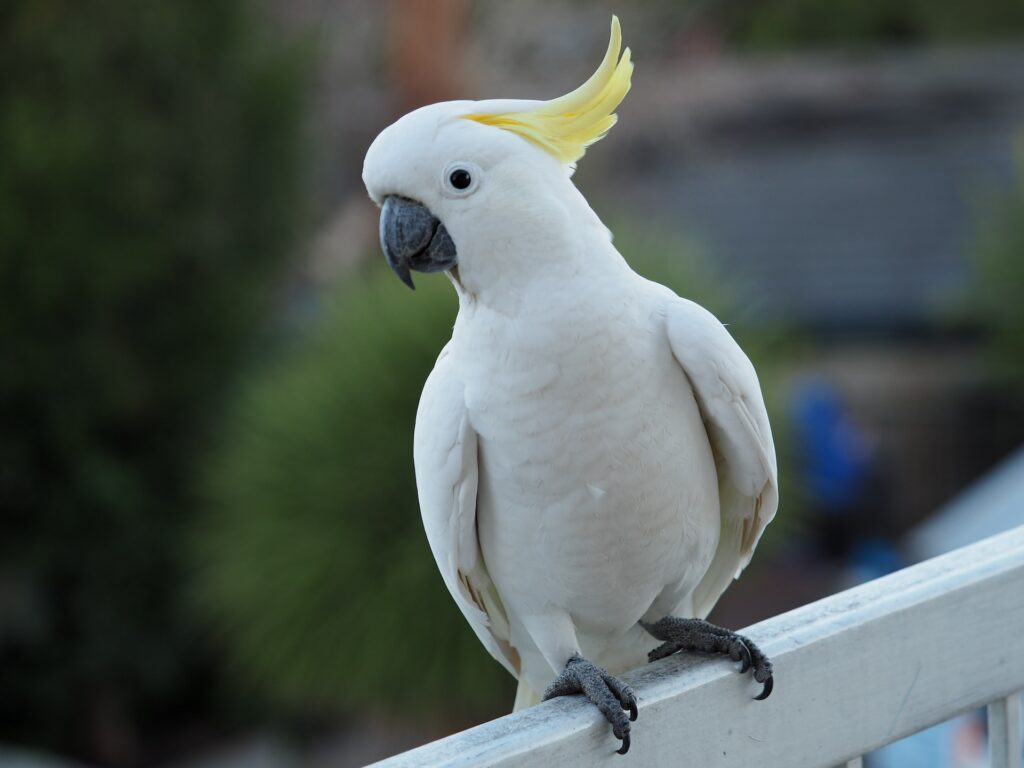
Cockatoos are very intelligent birds. Although, their ability to mimic human speech is not as good as the previous two mentions. They are some of the most intriguing parrots with their playful and affectionate personalities. Their lifespan is impressive as well. Some breeds live for up to 70 years in captivity.
Macaws

Lively, stunning, and exotic, macaws are known for their vibrant colors, long tails, and impressive size. Most species have a predominantly red plumage with yellow accents near its forehead or throat area.
Other species come in various colors. One example is the blue-and-gold macaw which is mostly covered in blue and yellow feathers. They are also known for being noisy birds. And their speech isn’t always as understandable.
Ring-Necked Parakeet
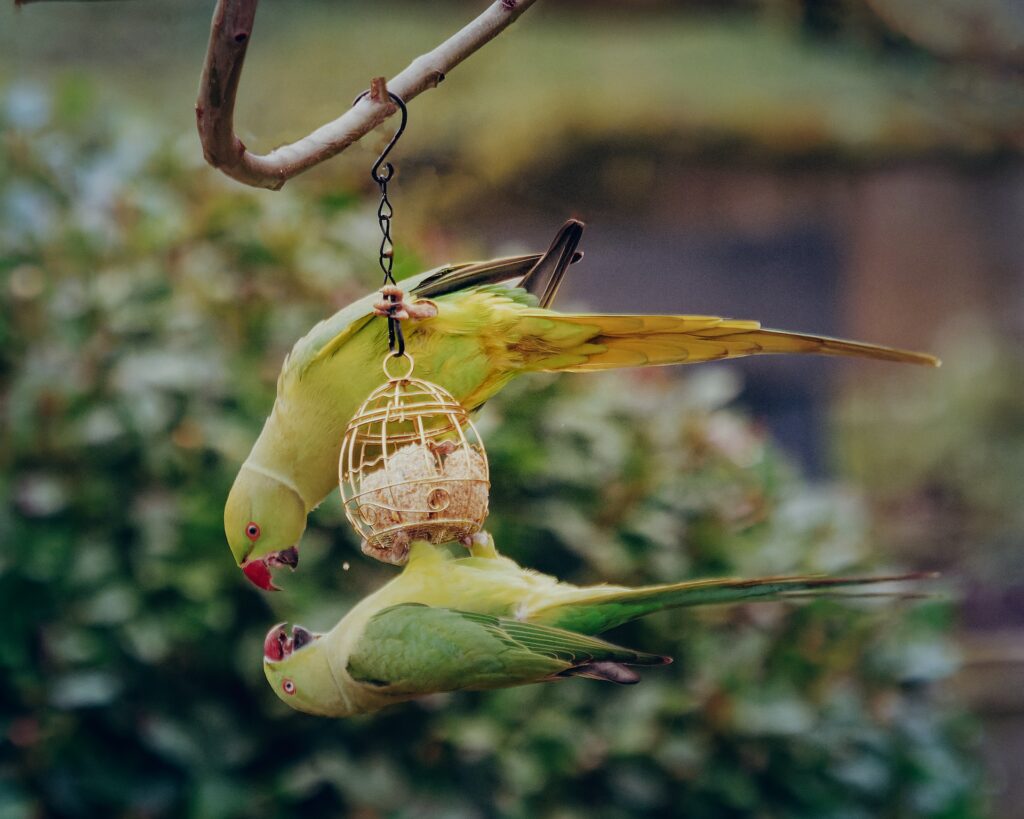
The ring-necked parakeet is a popular pet parrot due to its knack for learning entire phrases. Also known as the Indian ringneck parrot or rose-ringed parakeet, they usually come in bright lime green. They have blue and yellow feathers on their tail and under their wings, respectively. Interestingly, males are distinct from the females. That’s thanks to the bands of colored feathers around their necks, giving the species its name.
Green-Cheeked Conure
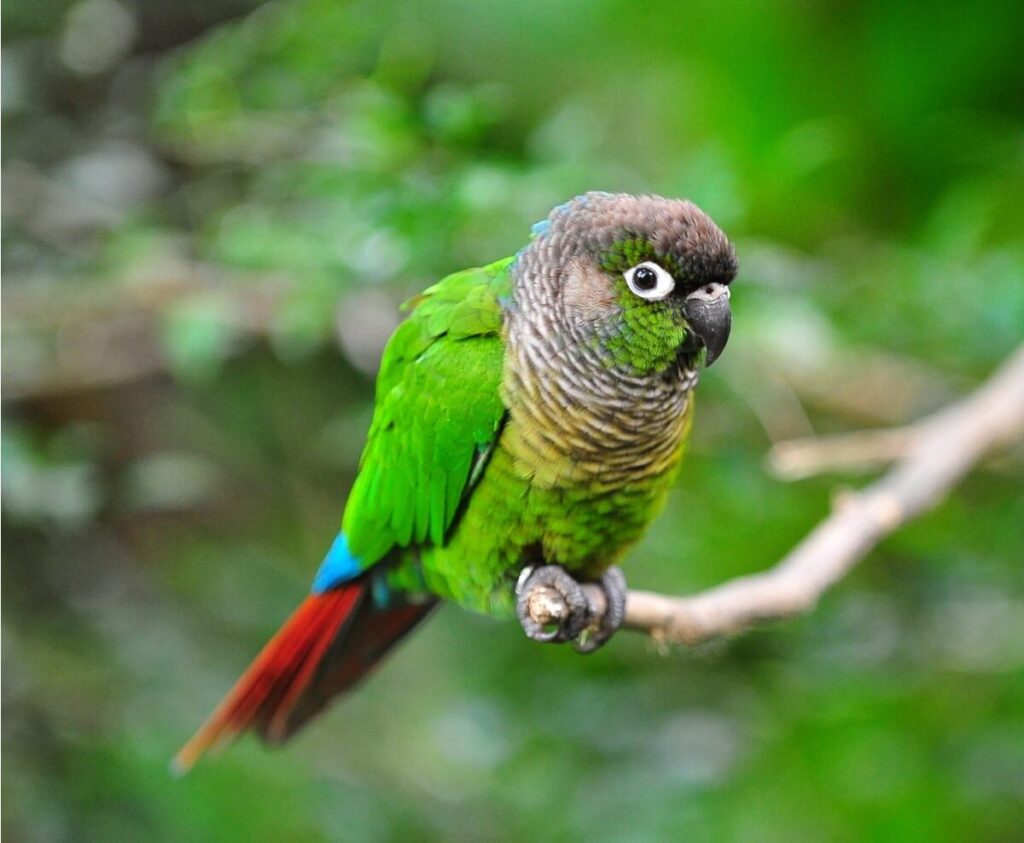
Green-cheeked conures are medium-sized birds with a lot of personality. Also known as the green-cheeked parakeet or yellow-sided conure, they are one of the most popular pet parrots. That is mostyly due to their size and temperament. They are not as vocal as the other birds mentioned here. However, they aren’t noisy and are great at learning small words.
Quaker Parrots
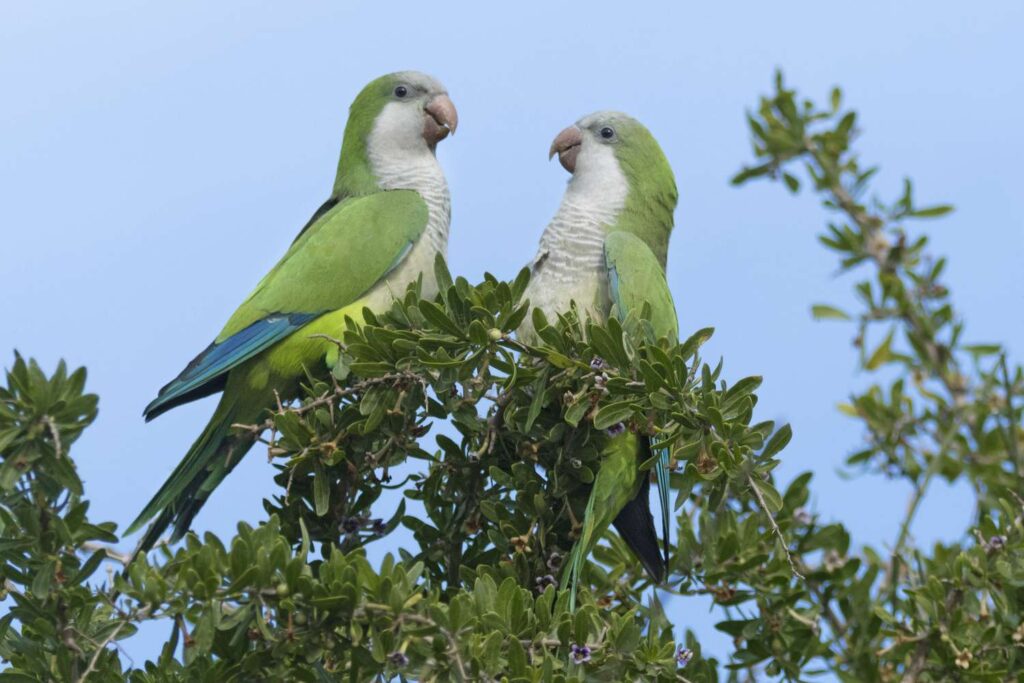
Quaker parrots are charming, comical, and excellent pets for those who love fun. Also called monk parakeets, they are known for the “quaking” movements. They do this when they are excited or annoyed. Fun fact: it is the only known species of parrots that build nests! But it is vital to note that keeping them as pets is illegal in some parts of the U.S.
Training Your Parrot To Talk
Build A Relationship With Your Parrot
Parrots are very social creatures. With their cognitive and communicative abilities, they can connect with others.
Now, is your goal to have them speak with human words? A lot of training will have to take place. To make that easier, you must first build a relationship with your talking parrot.
You have have to get to know your pet more. In turn, they must also become familiar with you. This connection will make them more willing to connect with you.
Spend time with your parrot. If possible, put their birdcage somewhere in the house that you frequent. This allows them to see and hear you, letting them familiarize with you.
Also, treat them right by giving them a lot of love and attention. Your training sessions will be productive and you can form a strong bond with them.
Start Simple Before Introducing More Words
Think of how human babies learn to walk before they can run. Similarly, parrots should start with small words before speaking full phrases. Train them with a few words like “hi”, “hello”, or “bye”. You can also teach them to say their own name if it isn’t too hard.
When teaching your pet parrot, speak them in an enthusiastic and positive tone. Once they’ve mastered saying one word, you can add another until it becomes an entire phrase.
Provide Positive Reinforcement
What do you do when your pet successfully repeats words? Be sure to reward that accomplishment! A positive reward system will reinforce that kind of behavior. You can give them treats like Kaytee Natural Spray Millet Bird Treats. It will let parrots understand that what they are saying is good.
Another reason for this is that parrots will mimic any sounds around them. By rewarding them for saying what you teach them, they will likely avoid saying other sounds.
Be Patient And Kind
Repetition is key to training your pet parrot to talk. While they are intelligent, it will take some time before they talk how you want them to.
Are you still training them with small words or working on whole phrases with them? Always remember to be patient. They don’t have to have the largest vocabulary for their talking ability to improve.
A talking bird is cool and all that, but training them creates a bond between you and your parrot. Enjoy this time with them and they will enjoy it with you as well.
